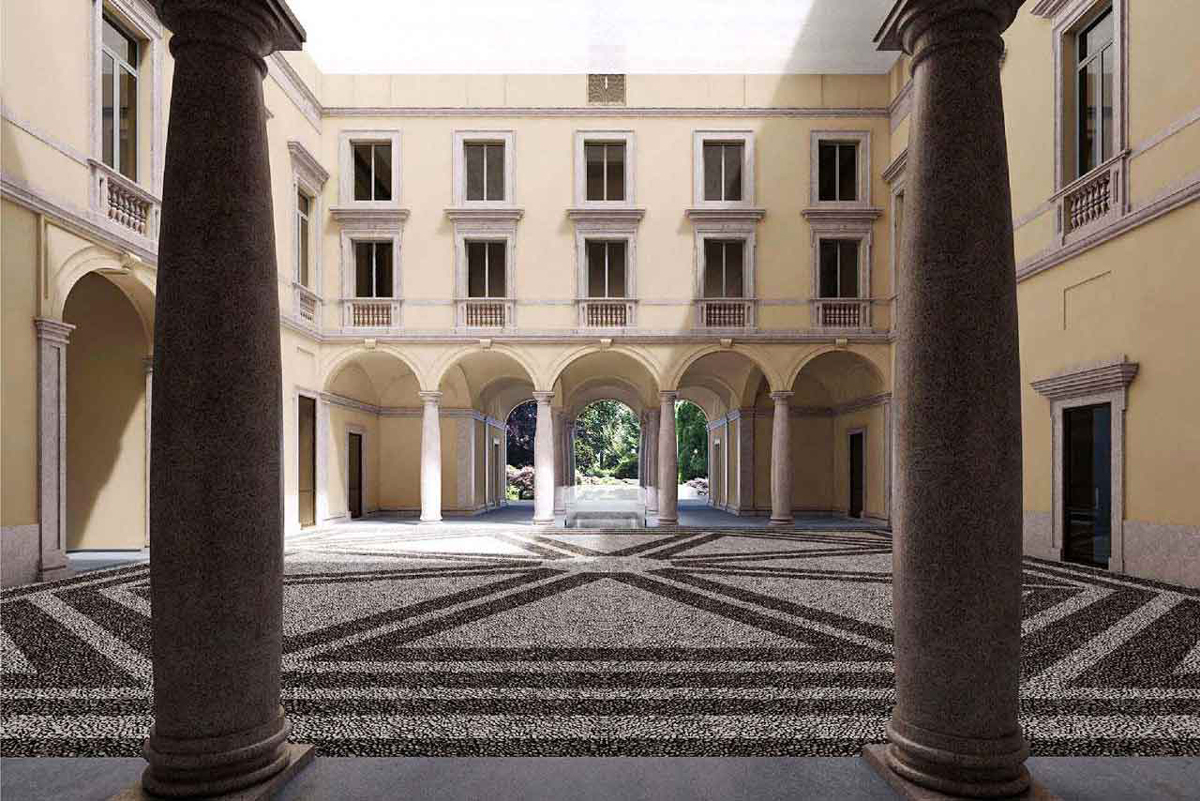Palazzo Citterio, part of the new Grande Brera cultural complex, is set to be inaugurated on 7 December
Half a century after plans were first made, Milan will open a major new museum for Modern and contemporary art. The Palazzo Citterio, a grand 18th-century residence less than 200m from the Pinacoteca di Brera, is set to be inaugurated on 7 December with the aim to create a large museum complex in Milan on the model of Florence and Rome in terms of visitor numbers and revenues. The development marks the realisation of “Grande Brera”, a new cultural complex with the Palazzo Citterio, Pinacoteca di Brera and the Braidense library - which, like the new museum, falls under the Pinacoteca’s direction - at its heart. Plans for the Citterio space were born in 1972, when the government purchased the building following a request by Franco Russoli, the then director of the Pinacoteca.

Photo courtesy of Brera Design District
Palazzo Citterio spans 6,500 square meters over three floors, and will become the wing dedicated to 20th-century art at the Pinacoteca. Here, on the piano nobile, the Jesi and Vitali collections will finally find a permanent home, showcasing key works by Boccioni, Carrà, Morandi, Modigliani, Sironi, Marino Marini, de Pisis, and (in the Vitali collection) valuable archaeological pieces. In the first room, dedicated to the second half of the 19th century, Pellizza da Volpedo's monumental painting Fiumana will be displayed. In the basement spaces, designed by James Stirling in the late 1980s, there will be a retrospective of Mario Ceroli. On the second floor, simultaneous exhibitions will be held: in addition to the permanent display, Palazzo Citterio will reopen as a venue for major exhibitions, thanks to the enhancement of its splendid garden. The general public is thus about to discover the beating heart of the Grande Brera, a project that has been the subject of much discussion, inspired by the success of Tate Modern, the 'new' extension of Tate Britain.

Foto di Walter Vecchio
The long-awaited realization of the Grande Brera - which includes the Brera Art Gallery, Palazzo Citterio, and the Braidense Library - has been made possible through collaboration between the public and private. Angelo Crespi, the general director of Brera (a role which now also includes overseeing the Cenacolo Vinciano), gave an interview to L’Economia, in which he discusses the private contributors, their involvement, and the additional services to be offered, such as a summer bar and a bookshop featuring books and design objects. Among the prominent names associated with the project is architect Mario Cucinella, recently awarded the Compasso d’Oro for the Luigi Rovati Foundation in Milan. Cucinella will design the ground floor of Palazzo Citterio, including the main hall, courtyard, and first floor. For the Salone del Mobile.Milano, supporting the Great Brera means contributing to a project that goes beyond this architectural installation. During the 63rd edition of the Salone del Mobile (8-13 April 2025), the courtyard of the Academy of Brera will host another extraordinary artistic installation, as a gift from the exhibition to the city. Another architect in the spotlight is Luca Molinari, curator of the exhibition La Grande Brera on the second floor of Palazzo Citterio, focusing on the architectural history of the Brera Palace, from its origins as a convent of the Humiliati in the Middle Ages to the present day.

Photo courtesy of Palazzo Citterio
The new visual identity of Grande Brera, developed by the Qubit, Carmi, and Ubertis group, takes the form of a brass-colored octagon: a clean, geometric, and timeless shape that recalls the flooring of the courtyards of both the Brera and Citterio palaces, reinforcing the connection between the institutions within the complex. The octagon is symbolically crossed by two corridors that branch off from the central courtyard, extending outward.

















































